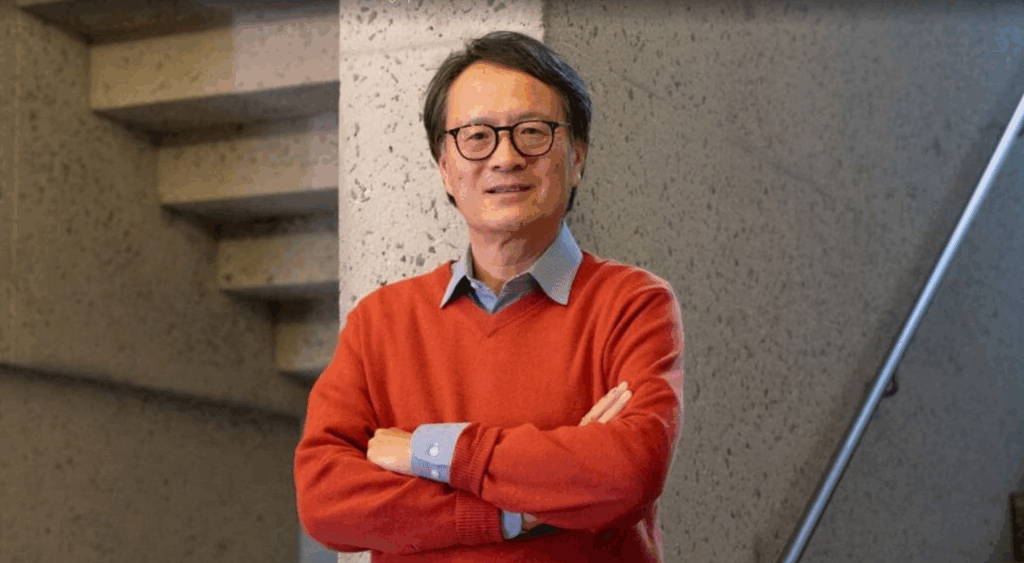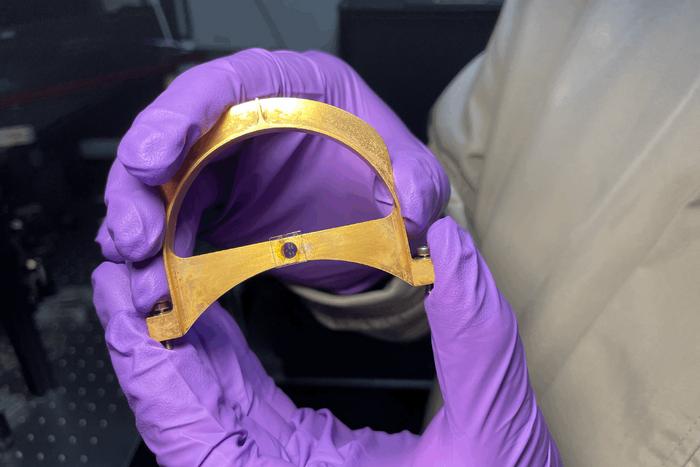Insider Brief:
- Scientists in China have arranged more than 2,000 rubidium atoms into a perfect quantum computing array — 10 times larger than previous systems, using an AI-guided laser setup.
- The work, reported by the South China Morning Post (SCMP), overcomes a key hurdle for scaling up neutral-atom quantum computers.
- The technique could be extended to tens of thousands of qubits, but limitations in laser technology still cap performance.
- Image: The experimental setup used by scientists in China to arrange more than 2,000 rubidium atoms into precise arrays for quantum computing research. (SCMP, Handout)
A team led by Chinese physicist Pan Jianwei used artificial intelligence (AI) to help create an atom-based quantum computing component that dwarfs previous systems in size, raising hopes that neutral-atom machines could one day operate with tens of thousands of qubits.
As reported by the South China Morning Post (SCMP), Pan and colleagues at the University of Science and Technology of China arranged 2,024 rubidium atoms — each functioning as a qubit — into precise two- and three-dimensional arrays. The feat, described in Physical Review Letters, reportedly marks a tenfold increase over the largest previous atom arrays and addresses one of the field’s most stubborn bottlenecks: how to scale beyond a few hundred qubits without prohibitive delays.
Quantum computers encode information in qubits, which can be realized through different technologies. SCMP notes that neutral-atom qubits, held in place by optical tweezers — or highly focused laser beams — offer advantages over superconducting circuits and trapped ions. They are stable and relatively easy to manipulate in large groups. But their growth has been stalled by the challenge of positioning each atom individually, a process that slows sharply as systems get bigger.

Until now, researchers typically moved atoms into place one at a time, making large-scale arrays impractical. Pan’s team, working with the Shanghai Artificial Intelligence Laboratory, replaced this slow step with a real-time AI control system that shifts every atom in the array simultaneously.
AI-Guided Optical Tweezers
According to SCMP, the setup uses a high-speed spatial light modulator to shape laser beams into traps that corral the atoms. The AI system calculates where each atom needs to go and directs the lasers to move them into perfect positions in just 60 milliseconds — 60,000th of a second, or about the same time it takes a hummingbird to flap its wings 5 times — regardless of whether the array contains hundreds or thousands of atoms.
The team indicates that the constant arrangement time is critical. It means that, in principle, the method could scale to arrays with tens of thousands of atoms without slowing down, SCMP reports. In the demonstration, the researchers achieved near world-leading accuracy: 99.97% for single-qubit operations, 99.5% for two-qubit operations, and 99.92% for qubit state detection. These figures are on par with results from leading U.S. institutions such as Harvard University.
Benchmarking Against the Global Field
The newspaper points out that three main architectures have dominated quantum computing research since the 1980s: superconducting circuits, trapped ions and neutral atoms. While superconducting qubits, favored by companies like Google and IBM, and trapped ions, pursued by firms such as Quantinuum and IonQ, have made high-profile advances, neutral atoms are emerging as a serious contender due to their inherent stability and potential for dense scaling.
Pan’s latest work pushes neutral-atom systems closer to that potential by solving a labor-intensive engineering problem, the newspaper suggests.
Despite the scale-up, SCMP notes that the new approach still faces constraints. In three-dimensional setups, the researchers could only move atoms within the same horizontal layer. Vertical movement risked losing atoms, which caps the array’s flexibility. Another limit comes from the hardware: the power and precision of the lasers and modulators used to create the optical traps.
Until stronger lasers and faster, more accurate light modulators are developed, the maximum array size will remain below the theoretical limits suggested by the constant rearrangement time.
According to SCMP, the team’s roadmap involves upgrading these components so they can manipulate larger arrays and possibly add vertical mobility to the repositioning process. Doing so would open the door to arranging tens of thousands of atoms in three-dimensional grids, a scale that many experts believe is necessary for fault-tolerant, general-purpose quantum computing.
Potential Impact
If successful, scaling neutral-atom arrays to that size could allow them to run algorithms that are currently beyond the reach of classical computers and existing quantum prototypes. Applications could range from simulating complex molecules for drug discovery to solving optimization problems in logistics and materials science.
SCMP added that the reviewers of the Physical Review Letters paper described the achievement as a significant leap in both computational efficiency and experimental feasibility. The AI-guided control method, coupled with high-precision lasers, essentially removes the scaling penalty that has long plagued neutral-atom designs.
Pan Jianwei, often referred to as China’s “father of quantum,” has been at the center of the country’s push into quantum science, from secure quantum communication networks to advanced computing prototypes. This latest result, SCMP reports, fits into a broader national strategy to compete with — and in some areas, outpace — global quantum leaders.
While superconducting and trapped-ion systems have attracted most commercial investment, neutral-atom quantum computing is gaining traction in both academia and start-ups, particularly in Europe and the U.S. The SCMP coverage suggests that China’s entry into large-scale atom arrays could shift the balance of expertise in this niche but promising architecture.
Moving from a laboratory demonstration to a working quantum computer will require more than just scaling up the number of qubits. The system will also need robust error correction, fast and reliable interconnections between qubits, and algorithms tailored to neutral-atom architectures.
Still, the constant-time arrangement breakthrough reported by SCMP is one of the most substantial engineering improvements in the field in recent years. It addresses a fundamental scalability constraint without introducing new instability into the system, a combination that has proven elusive in other quantum architectures.

















